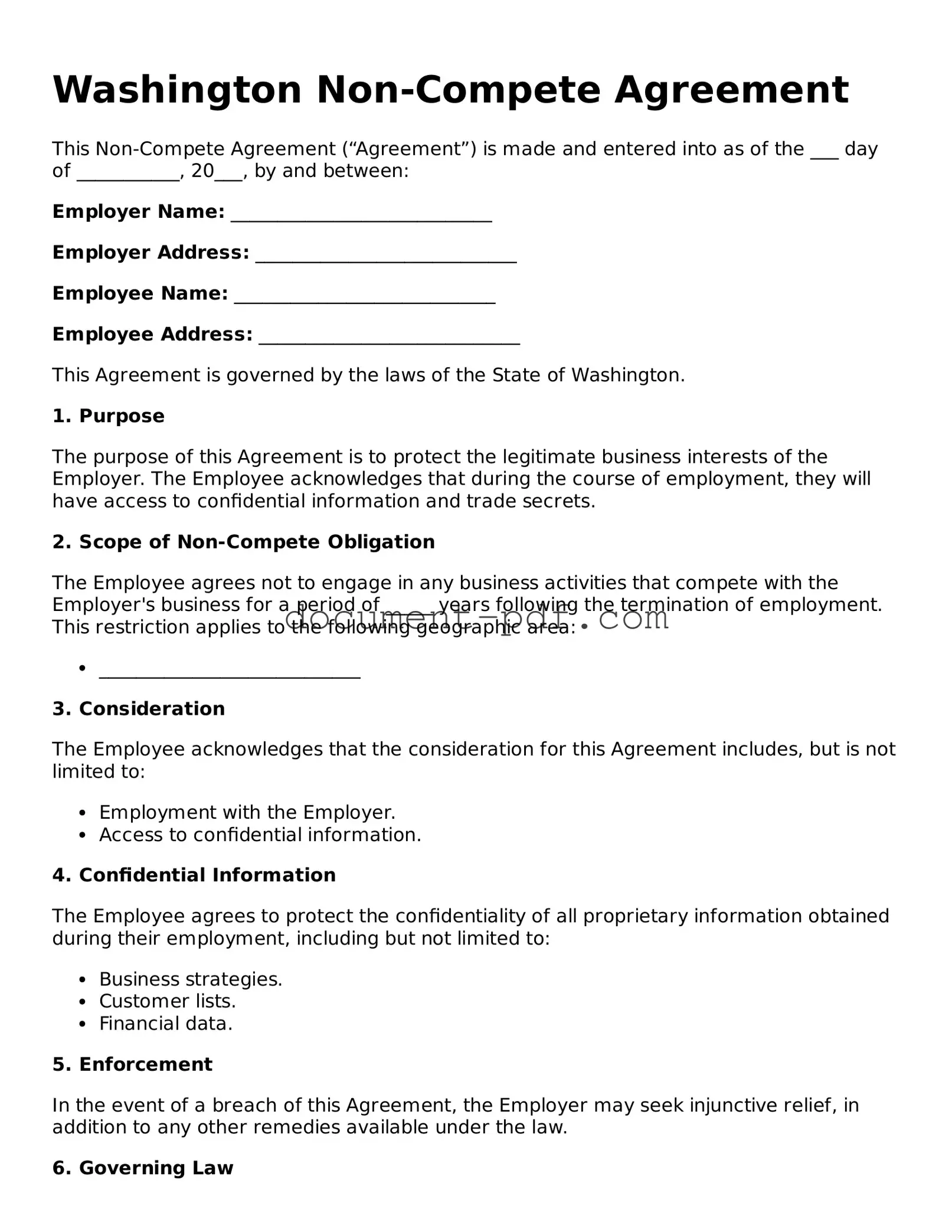Washington Non-Compete Agreement
This Non-Compete Agreement (“Agreement”) is made and entered into as of the ___ day of ___________, 20___, by and between:
Employer Name: ____________________________
Employer Address: ____________________________
Employee Name: ____________________________
Employee Address: ____________________________
This Agreement is governed by the laws of the State of Washington.
1. Purpose
The purpose of this Agreement is to protect the legitimate business interests of the Employer. The Employee acknowledges that during the course of employment, they will have access to confidential information and trade secrets.
2. Scope of Non-Compete Obligation
The Employee agrees not to engage in any business activities that compete with the Employer's business for a period of _____ years following the termination of employment. This restriction applies to the following geographic area:
- ____________________________
3. Consideration
The Employee acknowledges that the consideration for this Agreement includes, but is not limited to:
- Employment with the Employer.
- Access to confidential information.
4. Confidential Information
The Employee agrees to protect the confidentiality of all proprietary information obtained during their employment, including but not limited to:
- Business strategies.
- Customer lists.
- Financial data.
5. Enforcement
In the event of a breach of this Agreement, the Employer may seek injunctive relief, in addition to any other remedies available under the law.
6. Governing Law
This Agreement shall be governed by and construed in accordance with the laws of the State of Washington.
7. Entire Agreement
This Agreement constitutes the entire understanding between the parties with respect to the subject matter hereof and supersedes all prior agreements or understandings.
IN WITNESS WHEREOF, the parties hereto have executed this Agreement as of the date first written above.
Employer Signature: ____________________________
Date: ____________________________
Employee Signature: ____________________________
Date: ____________________________
